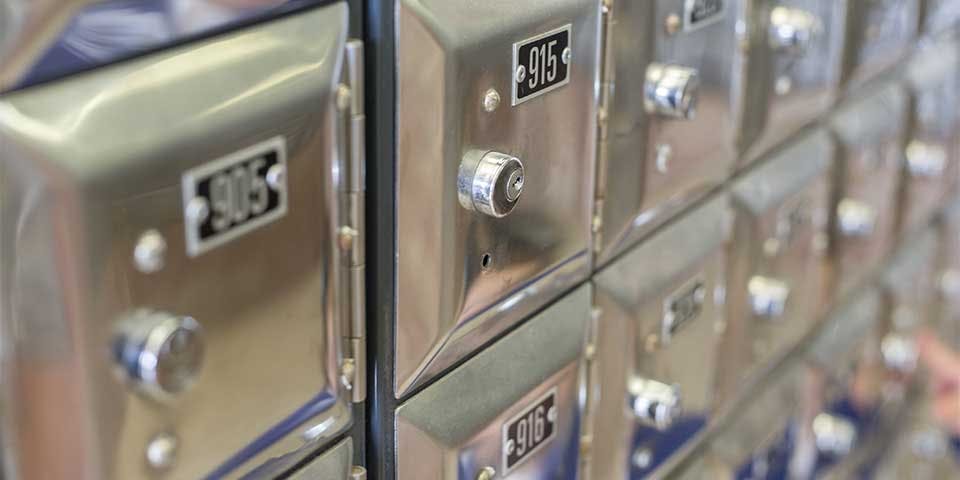27 February, 2023
How to Register as Self-Employed in the UK: A Step-By-Step Guide
Self-employment is becoming increasingly common in the modern world. Many people prefer being self-employed on a freelance basis to working traditionally. More flexible schedules, the ability to choose your own projects and responsibilities, and increased job satisfaction — the benefits are numerous. However, before embarking on this path and setting up your own private business, you need to register as self-employed.

In this guide, you will learn the essence of self-employment as a sole trader instead of working for a limited company. We will set out when it’s best to opt for self-employment and what is legally required for doing this. Also, the article will provide a step-by-step guide on how to register as self-employed in the UK and answer the most frequently asked questions.
What You Need to Know Before You Sign Up as a Self-Employed
A self-employed person is anyone who earns an income through any independent economic activity and not by working for a company or another person (employer).
This status is often compared with a sole proprietorship. The term sole trader refers to a specific business structure. When you sign up as self-employed, you indicate that you are not employed by anyone else and that you do not pay taxes through PAYE. In practical terms, the two terms are equivalent concepts.
It’s also important to compare a limited company with self-employment. The first is a business structure with its own legal entity separate from its owner. Limited liability companies must file tax returns and issue invoices. Self-employed people can receive income by providing services either to individuals or large, medium, or small businesses.
Another form of business structure is a partnership, which is formed when a number of individuals go into business together. Such a structure is popular with accountants and lawyers. If you choose this form as your business structure, it is important that one of the partners is responsible for filing an income tax return. The nominated partner must use the HMRC register online form to submit it. Regardless, all participants will still have to be set up as self-employed.
When Do I Need to Register as Self-Employed?
Once people start working for themselves, they are already considered self-employed, even if they have not yet gotten around to registering with the HMRC. You need to declare as self-employed if you:
- run a business and are responsible for its success/failure;
- have several clients at the same time;
- independently assign a fixed cost for your services;
- sell goods or services for profit.
The question “do I need to register my business in the UK?” may arise if you run a limited liability company but are not classified as self-employed by HMRC. In this case, you are both the owner and employee of the company.
To successfully register as self-employed with HMRC, you must do so by October 5, after the end of the tax year in which you completed your employment. For example: if you finished working for a company in the summer of 2022 and became self-employed immediately after, then you need to fill out a self-employed registration form by October 5, 2023.
If we consider the question “When do I need to register as self-employed?” in terms of earnings, the answer is simple. It doesn’t matter if you work full-time or part-time; as soon as your earnings exceed 1,000 pounds within one tax year, then it’s time to fill out the tax form and prepare to find out your tax rate.
How to Register as Self-Employed in the UK
Understanding how to register as self-employed should be no problem if you have a bank account; you just need to get your UTR number by post and get an activation code to enter your government gateway account, and fill out a tax return SA100 form (also possible by post). But let’s start with the basics!
There are two options for registration: by phone or online. The first method is suitable for anyone who does not like to deal with electronic forms. All you need to do is call HMRC at 0300-200-3500. This is available weekdays from 8 am to 8 pm or Saturdays from 8 am to 4 pm.
If you want to apply online, here is a step-by-step guide!
- Preparation
Explore and collect all the information you need to be ready to get registered.
- Visit the HMRC Website
After finding out how to register as a self-employed business owner and learning which documents are needed, go to the HMRC website and select the “register online” option.
- Get a Government Gateway Account
By registering on the site, the user gets access to an account that will help deal with taxation as a self-employed person. The system will generate a random 12-digit code — remember it or write it down, as this will become your login. Then you need to come up with a strong password.
- Apply for Self-Assessment
Next, you need to fill out an application in which you will have to indicate various personal information, details of the work you are engaged in, your National Insurance Number, and the business address for a self-employed person (if you don’t work at your home address). You’ll also need to choose a self-employed business name and description.
- Wait Until HMRC Reviews the Application
Once your application has been reviewed and approved, you will receive a Unique Tax Reference number within ten days. The UTR contains ten characters; you will need to prove that you are self-employed and manage your taxes.
- Enter the Activation Code
Next, you will receive an account activation code (this happens as part of the verification process). Sending the code takes about 28 days. Enter it as soon as you receive it, as it has a limited expiration date.
That’s all! Now you know how to register as self-employed step by step, and after completing all the stages, you can manage your taxes. After that, you must file a tax return once a year and pay taxes.
What Happens After I Declare as a Self-Employed: Responsibilities
From the moment you obtain the status of “self-employed,” you are obliged to:
- keep accurate records of sales or expenses that relate to the business;
- calculate the amount of the taxes due, and pay taxes in a timely and complete manner.
Remember that you don’t have an employer who will deduct a certain percentage of your salary to pay National Insurance plus income tax — it is now your responsibility.
And we recommend keeping all correspondence from HMRC. This will help you quickly and easily complete your tax return in the future. If you don’t like to delve into the mass of letters, then you can use a virtual office mail scanning service.
How Long Does It Take to Register as Self-Employed?
Many people ask the question, ‘how do I register as self-employed.’ Now that we’ve looked at how to do that, we’d also remind you to do it as soon as possible. The official HMRC guidelines indicate that the full registration process takes at least seven days. The average time for consideration of applications and the completion of registration takes from 7 to 10 days. The timeframe may increase if you are abroad (up to approximately 21 days).
How Can the Hoxton Mix Help?
After reading this article, you understand how to tell HMRC that you are self-employed and fill out the form, but you may run into a problem when specifying the address. Many self-employed don’t want to use their home addresses. However, this is not a problem since Hoxton Mix offers its first-class London business address service.
You can choose a great private office space in London by checking out the available virtual plans, dedicated desks, or even office suites. These options are ideal for companies or sole traders who need a business address at an affordable price — try it yourself!
FAQ
What if I’m already self-employed but not registered yet?
You must register as self-employed as soon as possible, preferably by October 5 of the year following the start of your activity.
How long will it take for my application to be processed by HMRC?
It usually takes from 7 to 10 days, but there may be exceptions. You can find details regarding your application processing time on their site or phone them at 0300-200-3310.
What are the main self-employment opportunities?
As a rule, users explore the question, “how do I tell HMRC that I am self-employed?” after studying all the self-employment opportunities. The most frequent options are trainers and coaches, designers, photographers, drivers, content-makers, and IT specialists.
Hand-picked related articles
Our meeting rooms are located at our Paul Street office,
and it’s just a few minutes walk from Old Street tube station…
Our Address
3rd Floor, 86-90 Paul Street,London,EC2A 4NEDirections
Opening hours
Monday - Friday 9am - 18.00pm








